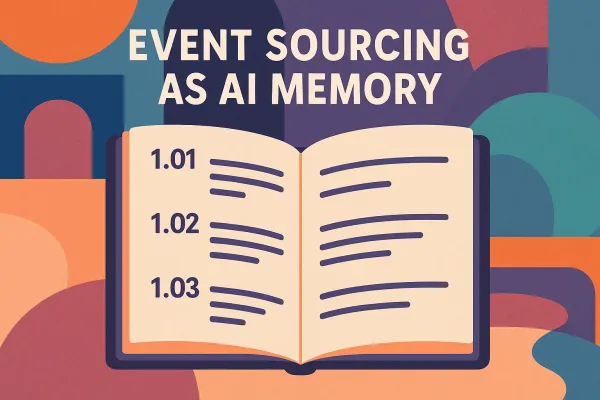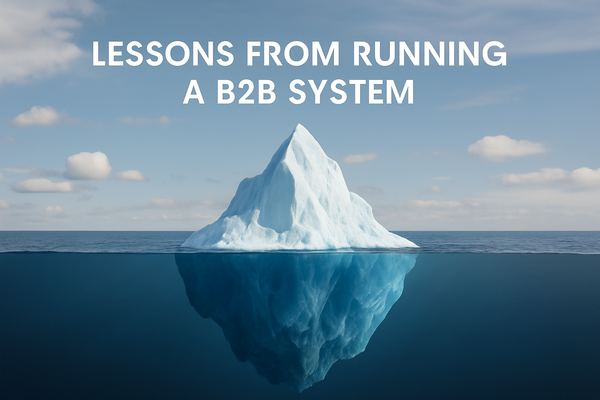Implementing CDP in B2B Business

I recently stumbled upon an interesting YouTube video that provided very valuable insights on how to implement a Customer Data Platform (CDP).
Let's dive into a key takeaways. Do not miss the full video down below. Very interesting.
Step 1: Mapping the Customer Experience
Imagine having a bird's-eye view of your entire customer journey, from the first awareness touchpoint to long-term advocacy. That's exactly what a Customer Experience (CX) map provides. This visual document is the cornerstone of your CDP strategy, offering insights that can drive real business value.
To create your CX map, gather key stakeholders for a workshop. Start by defining your guiding principles – the north star that will align all your customer interactions. Then, plot out the journey steps across five key stages: awareness, consideration, boarding, retention, and advocacy.
But don't stop there. Layer in touch-points, responsible departments, key metrics, and primary KPIs. Want to really supercharge your map? Add a customer experience graph showing satisfaction levels at each stage, and plot out your trackable data points. This last step is crucial – it visualizes what customer data is available at each stage of the journey.
The result? A comprehensive view of your customer journey that reveals quick wins, problem areas, and opportunities for personalization. It's not just a pretty picture – it's a strategic tool that aligns your entire organization around the customer experience.
Step 2: Decoding Your Data Ecosystem
With your CX map in hand, it's time to dive into the nitty-gritty of your data ecosystem. The Data Resolution Map is your decoder ring for understanding how customer data flows through your organization.
Start by listing out all your data sources – your website, mobile app, CRM, data warehouse, and any other repositories of customer information. For each source, identify the key identifiers (like cookie IDs or email addresses) and user attributes (such as behavioral data or transaction history).
But here's where it gets interesting: you need to understand the velocity of your data. Some data points, like email addresses, rarely change. Others, like purchase history, update frequently. Understanding these rhythms helps you determine how often data should be synced to your CDP.
Visualize how this data flows into your CDP, how it's unified to create a single customer view, and how it's then activated across your marketing channels. This map becomes your blueprint for data integration and audience creation.
Step 3: Crafting Tactical Use Cases
Now comes the exciting part – identifying the use cases that will drive real business value. This is where the magic happens, merging the high-level insights from your CX map with the detailed understanding of your data ecosystem.
Start brainstorming use cases that could improve each stage of the customer journey. Perhaps you want to reduce drop-offs during onboarding, or increase upsell opportunities for existing customers. The key is to think both ambitiously and practically.
Once you have a list of potential use cases, it's time to prioritize. Plot each use case on a matrix, with expected business value on one axis and implementation effort on the other. This visual representation helps you identify the "quick wins" – high-value, low-effort use cases that can demonstrate early success and build momentum for your CDP project.
Step 4: Assembling Your Dream Team
A CDP is powerful, but it's not magic. To truly unlock its potential, you need a cross-functional task force. Think of it as assembling your customer data Avengers.
You'll need a data engineer who understands the intricacies of your data architecture. A CDP expert who can navigate the platform's capabilities. Channel owners who can activate audiences across various marketing touch-points. A content strategist to ensure your personalized messages resonate. And a data analyst to measure success and guide optimization.
This diverse team brings together the technical know-how, marketing expertise, and analytical skills needed to turn data into actionable insights and compelling customer experiences.
Step 5: From Blueprint to Reality
With your strategy defined and team assembled, it's time to bring your CDP vision to life. Aim to create your CX and Data Resolution maps within the first month, along with a prioritized list of use cases and a data governance plan.
The next couple of months will focus on technical implementation – integrating data sources, setting up audiences, and configuring your activation channels. By month four, you should be ready to start activating use cases and measuring results.
But remember, implementing a CDP is a journey, not a destination. Expect an initial period where effort outweighs visible benefits. Stay the course. As you gather more data and your AI models improve, you'll reach a tipping point where the CDP's impact on customer engagement and conversion rates becomes undeniable.
One company that followed this roadmap saw staggering results – a 50% increase in conversion rates on category pages and a 66% improvement in first product search conversion. These aren't just numbers; they represent a fundamental shift in customer understanding and engagement.
Full video with detailed explanation of all steps.
Please log in if you'd like to access the full podcast and video. Do not miss this out it's an eye opening masterclass with use-cases, etc. By logging in, you'll gain access to the complete content, where we dive deep into the step-by-step process of implementing a Customer Data Platform (CDP), sharing practical examples and insights on how to optimize customer engagement and data management across channels. Don't miss out on the valuable strategies discussed!



